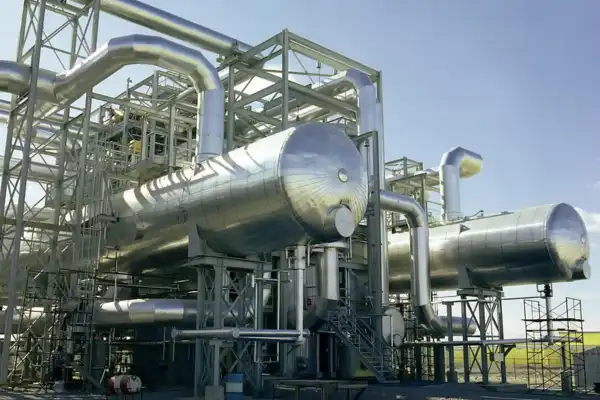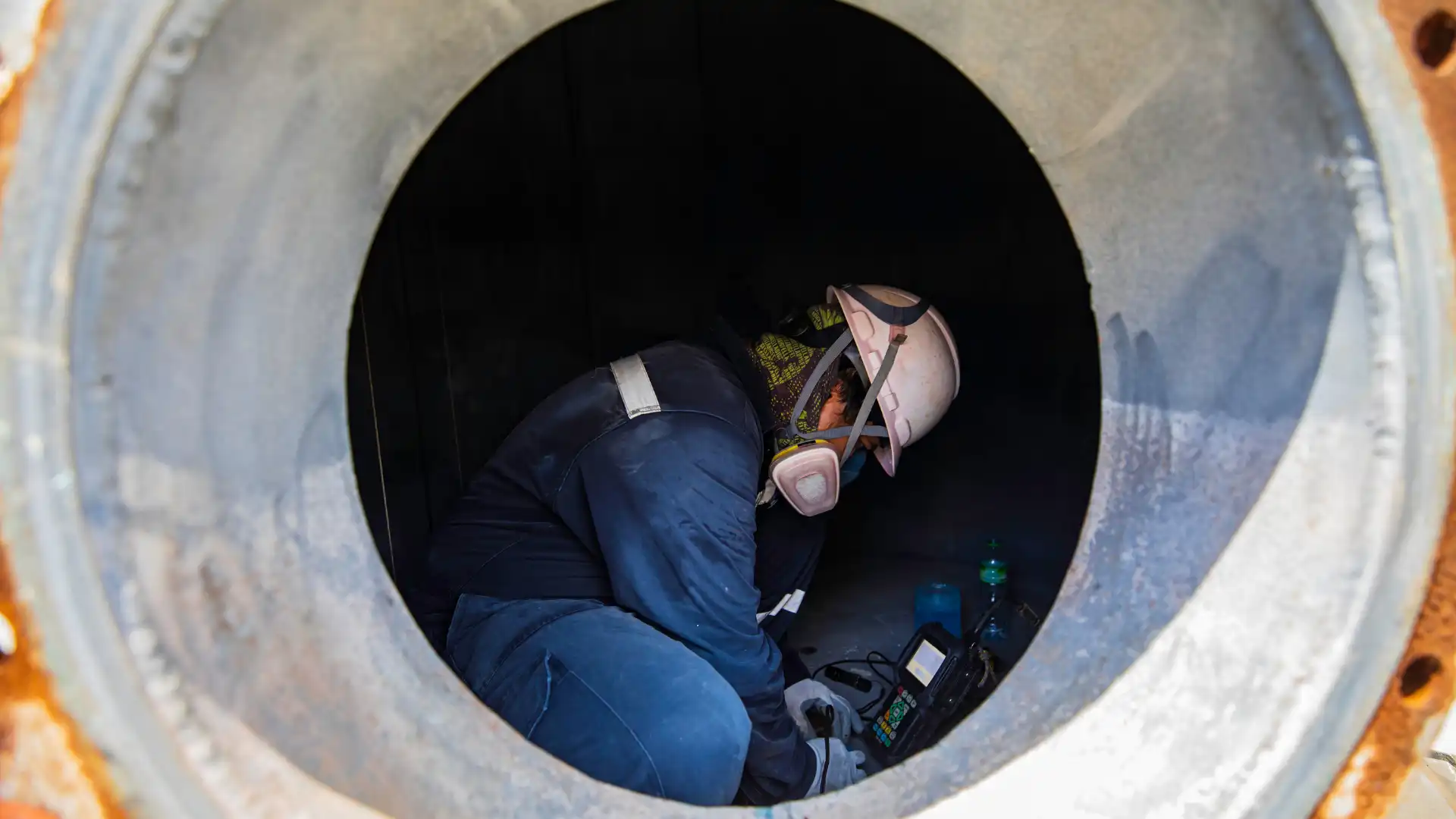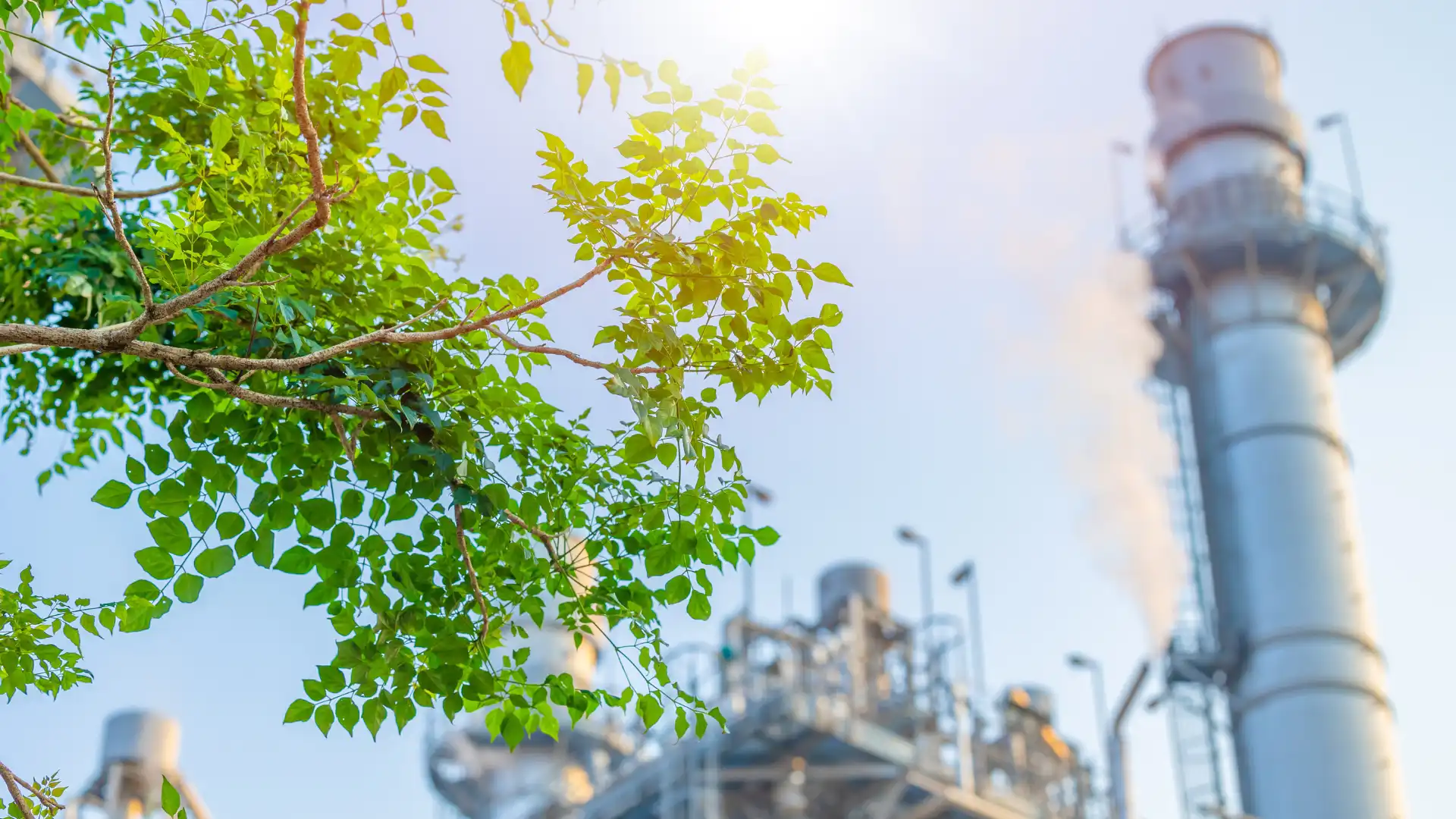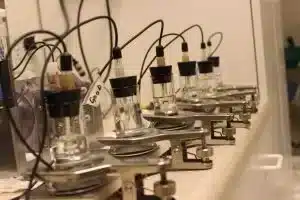Cladding for Oil & Gas Pressure Vessel Corrosion
HVTS® Cladding Prevents Oil and Gas Pressure Vessel Corrosion
IGS is an on-site thermal spray company with decades of experience in designing and delivering High Velocity Thermal Spray (HVTS®) cladding applications to critical O&G process assets globally. Since 2001, IGS HVTS® cladding has been successfully used to effectively eliminate internal vessel corrosion with the application of a high nobility Corrosion Resistant Alloy (CRA) corrosion barrier. IGS HVTS®is a long-life barrier (typically in excess of 10 years), freezing the internal metal condition, reducing future shutdowns and maintenance requirements, and increasing process productivity and availability.
Corrosion-Erosion of Critical Oil and Gas Pressure Vessels
In the FEED stage, refineries and gas plants are designed to provide a minimum operating life (design life). However, in service conditions rarely match the FEED parameters; plants operate well beyond the original design life and challenges in vessel fabrication, design, and process operation typically leads to higher internal corrosion rates than anticipated.
This introduces the requirement for maintenance, repairs, or replacement of process equipment to prevent loss of containment, maintain asset integrity, and process operation.
An internal metal alloy upgrade with a highly Corrosion Resistant Alloy will provide a long-life corrosion barrier to stop internal vessel corrosion and wastage of the vessel pressure boundary, enabling asset life extension, increased uptime, and reduced maintenance.
High nobility CRA alloys can be applied by Weld Overlay techniques. However, this technique presents many challenges in the field, such as the application time, creation of a Heat Affected Zones (HAZ), need for Post Weld Heat Treatment (PWHT), and vessel distortion. A more economical and cost-effective solution is applying high nobility CRA alloys with IGS HVTS®.


On-Site HVTS® Cladding Mitigating Internal Pressure Vessel Metal Wastage
IGS High Velocity Thermal Sprayed cladding is a proven technique to apply a high nobility CRA to operating assets in-situ, in the field, with minimum downtime and disruption to plant operation.
IGS utilizes only true high velocity application processes, where atomization of the material occurs before or in a super-sonic gas stream. This is the only way in to achieve the optimal cladding properties, where cladding particles are small enough, and compacted enough to provide the necessary macrostructure needed for reliable and predictable long-term corrosion barrier performance.
On-Site CRA Cladding
IGS HVTS® cladding creates value for O&G process asset owners and operators by ensuring the reliable and predictable performance of their assets. Customers who view reliability and dependability of their process productivity as mission critical to their revenue generation and / or their customers will experience the economic benefit of Metalspray® technology and approach to process asset reliability.
Through our strategically placed operations in the Americas, Europe, Africa, CIS, Middle East, and Asia Pacific regions, IGS focuses on creating value for our customers globally by ensuring reliable and dependable performance of their mission-critical assets.
Oil & Gas Services

What is the difference between cladding and weld overlay?
Weld overlay is the application of metal using a welding process. Welding requires fusion of the metal substrate with the weld bead, a metallurgical bond that induces thermal stress, heat affected zones (HAZ) and requires pre- and post-weld heat treatment (PWHT).
Integrated Global Services (IGS) cladding is deposited using a high velocity thermal spray (HVTS®) process which creates a mechanical bond to the prepared substrate without inducing any thermal stress.

IGS HVTS® offers our customers the following advantages over other thermal spray and cladding solutions:
- IGS HVTS® cladding is designed to practically eliminate permeability and therefore corrosion, using modified alloys and application equipment technology developed by IGS R&D, then tested and evaluated in conjunction with O&G majors.
- HVTS® provides asset owners and operators with a reliable internal corrosion barrier enabling increased run times, fewer shutdowns, reduced maintenance, and lower inspection and operating costs.
- IGS HVTS® cladding has been in service in O&G process’ since 2001, in aggressive processes operating with highly sour environments (high H2S, Chlorides (Cl), Carbon Dioxide CO2), etc.)
Automated Field Welding Services
Extend asset life and safeguard critical infrastructure with IGS’s industry-proven automated welding services. Hit schedule without cost or scope creep with our superior project management. Expert planning and execution minimizes turnaround time with 98.6% on-schedule delivery rate across 400+ turnaround projects.
IGS mobilizes globally to deliver automated field welding services tailored to the most demanding industrial environments. From corrosion-prone pressure vessels to high-temperature boiler tubes, our specialized techniques, such as Automated Weld Overlay, restore and protect vital equipment with unmatched precision and reliability.
Our Welding Services
Extend asset life and safeguard critical infrastructure with IGS’s industry-proven automated welding services
IGS Experience in the Oil & Gas Industry
Integrated Global Services, Inc. is the pioneer in the use of Thermal Spray claddings in O&G process assets. IGS has completed tens of thousands of square meters of onsite internal vessel application in critical O&G process equipment over the past two decades.
Having completed so many applications over so many years, uniquely positions IGS as the leader in materials, application technology, installation, refurbishment and operating methods for successful application of our HVTS® claddings in O&G facilities.
Simply stated, we are the best positioned to know what works and what does not in many varying O&G processes onshore or offshore, upstream or downstream, with different feed conditions across the globe. Where others are experimenting with potential solutions, IGS has trusted and proven solutions.

Watch: IGS Address Unexpected Pressure Vessel Corrosion
In this video, Norman Kiddie, SVP of Global Operations at IGS, shows how IGS addressed unexpected corrosion in 6 additional pressure vessels during a planned turnaround saving time and costs in upcoming TAs while maintaining process vessel integrity.
Optimized Solutions for O&G Critical Process Asset Protection
Over the past two decades, we have leveraged this experience and knowledge to develop unique materials and application methods to provide reliable and predictable protective corrosion barriers in the most challenging O&G process assets and environments globally. We have learned that:
- For the use of IGS HVTS® claddings to provide the strongest return on investment, critical assets should be managed proactively so as not to allow the steel pressure vessel wall thickness to deteriorate beyond its corrosion allowance. IGS HTVS is a corrosion barrier which can be applied to any metal substrate (carbon steel or CRA) of a fit for service vessel. Managing asset integrity and monitoring corrosion is critical to prevent vessel replacement or major, costly mechanical repairs.
- HVTS® alloys and application equipment needs to have specific properties to successfully prevent internal vessel corrosion reliably for the lifetime of the asset. Permeability, oxide content, toughness, and residual stress properties are some of the critical characteristics that determine whether thermal spray claddings will prevent internal corrosion and not cause secondary problems in the vessel such as accelerated wastage of the pressure boundary at the cladding interface, should the cladding fail in localized areas.
- Minimizing downtime and maximizing the process output is the key to maximize productivity. Utilizing an internal corrosion barrier such as IGS Metalspray® cladding, together with IGS proprietary inspection technologies, enables clients to actively monitor internal cladding integrity externally (without vessel entry), extend time between vessel interventions and inspection (to 5 or more years), reduce shutdown/turnaround durations and cost due to the associated reduced maintenance and repair requirements facilitated by a reliable internal corrosion barrier.
- IGS creates value for its clients not only through provision of skilled personnel and proprietary fit for service HVTS® cladding solutions but also through expert inspection and corrosion or metal wastage modeling which allows IGS to specify what materials should be applied, both on initial application and periodic refurbishment, to ensure long term dependable performance.
Common Problems and Solutions for Pressure Vessel Corrosion
How do you maintain a pressure vessel’s integrity?
You need to maintain the wall thickness which acts as your pressure boundary. You can do this by applying a protective barrier if the vessel is suffering from wall thickness loss or metal wastage caused by erosion, corrosion or a combination of both.
What is corrosion resistant alloy (CRA)?
A corrosion-resistant alloy is an alloy which is non-reactive or inert to its working environment, which means that it will not corrode.
What is the purpose of weld overlay?
Weld overlay has two purposes. To rebuild the pressure boundary or the wall thickness for mechanical integrity, or to apply a corrosion barrier.
What types of welding are typically used for pressure vessels?
Automated welding is usually performed in a workshop, whereas hand-applied welding is used in the field. There are two main types of welding material. One is used to restore wall thickness and rebuild mechanical integrity – typically the same material as the substrate, e.g., carbon steel. The other is applied as a corrosion-resistant alloy to upgrade the surface metallurgy of the vessel.

I’m here to help
Larry Emch
IGS Subject Matter Expert
Testimonial
IGS managed to execute the project ahead of time with zero safety issues and delivered a great quality HVTS® application.
– Plant Engineer
Free consultation with an IGS Subject Matter Expert
IGS is here to provide information, answer questions and create an effective solution for your needs.
